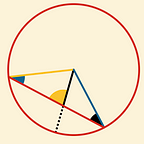The Second Most Important Paragraph For College Football In the NCAA’s Guidelines for Sports Amid Covid-19
On July 16th the NCAA issued its most recent set of return to sports guidelines for member institutions. The NCAA has limited ability to require member institutions to implement particular measures in this area (thus, “guidelines”), but it is expected that these guidelines will largely overlap with what the Power-5 football conferences (and their member institutions) are expected to issue.
Among the recommendations is the call for any player that tests positive to quarantine for at least ten days, and for any player that has a “high-risk” exposure with an infected person to quarantine for at least 14 days. This raises the prospect that a positive test for one player could result in large numbers of teammates being quarantined for fourteen days as a result of one positive test.
There are two reasons the impact of this requirement may be far less than it first appears. The first is in the definition of “high risk” exposure. Drawn from the CDC guidance, the NCAA document identifies this as (among other things) as “An individual who was within 6 feet of someone with COVID-19 for at least 15 minutes.” So being exposed to an infectious person in meeting room where everyone is at least 6 feet apart is not a “high-risk” exposure under this definition, particularly if everyone is wearing a mask, if there is good ventilation, and/or if there are plexiglass barriers between people, then the risk is even lower.
The second reason has to do with wearing masks in “athletically related” activities. The most important paragraph on this point is, to put it bluntly, a bit opaque. Quoted here in full:
“Theoretically, if a team can successfully implement universal masking and distancing practices during athletically related activities, it could reduce the risk of spread in the event of an infected team member. Individuals who participate in athletics activities while in proximity (less than 6 feet) to an infected individual and who may otherwise be considered a high-risk contact because of that proximity, could possibly not be considered a high-risk contact for contact tracing purposes if the infected individual was wearing a mask/cloth face covering during those athletics activities. In other words, in addition to lowering the risk of transmission, universal masking practices may potentially ease the operational burden that would otherwise accompany managing a community or team outbreak. This theoretical consideration is likely to be in flux as we understand better the operational considerations for “prolonged exposure” and “close contact in sport.”
The tl;dr version: “Hey schools, we the NCAA committee are identifying a potential escape hatch to “ease the operational burden” (not quarantine entire position groups, etc.) on your football team if one person tests positive. The science isn’t in yet but if everyone is wearing a cloth mask then maybe no one but the person that tests positive will be required to quarantine. Even if the contact is at less than six feet and for more than 15 minutes.”
The paragraph is written so opaquely because while there is some reason to believe that cloth face masks reduce the risk of transmission much more than we thought even a few months ago, there is not enough evidence to conclude the masks protect well enough to reduce prolonged close contact to low risk. As of now, the CDC guidance the NCAA is referencing still states that as a “conservative approach” the definition of a close contact “should” be made irrespective of whether the infected person is wearing a face mask.
Most of the recommendations in the NCAA Guidelines are drawn fairly directly from CDC research and guidance. Thus, it is a big deal that the committee would be so forward-leaning on the issue of the potential effectiveness of face masks, as well as the attention it gave to the possible effectiveness of face shields.
So for everyone rooting for a college football season, keep an eye on Medrxiv for pre-print scientific articles on the effectiveness of masks.
And if anyone has any ideas about how to ethically construct a study to determine how to reduce transmissibility of coronavirus between multiple 300+ pound men sweating, snorting, and wrestling each other for 11 minutes of actual game time on Saturday afternoons this fall, there are 65 Power five schools that are probably willing to pay you several million dollars to get that done in the next four weeks.
I will write about the most interesting item in the NCAA guidelines in a subsequent article.
References:
